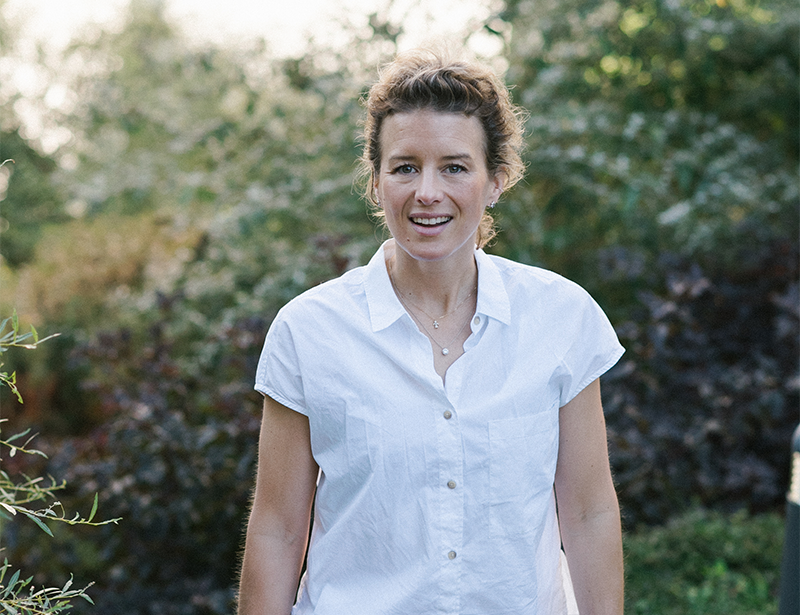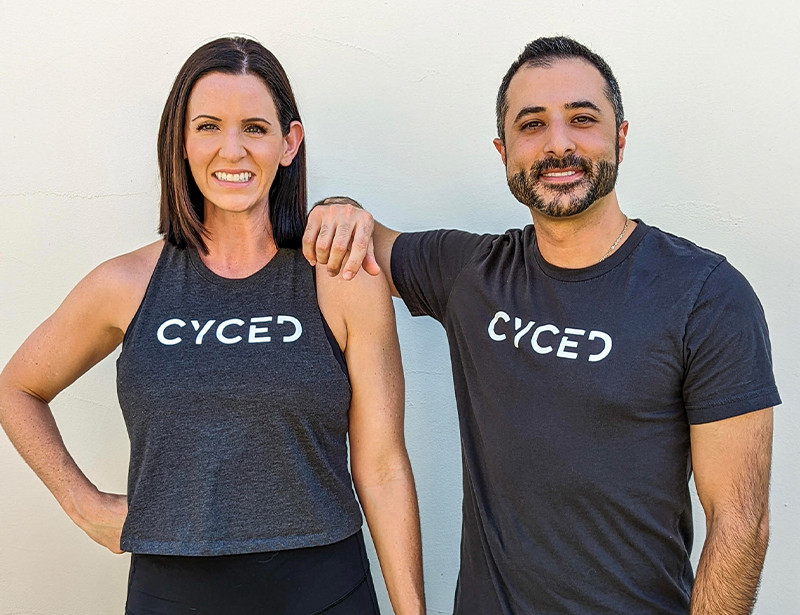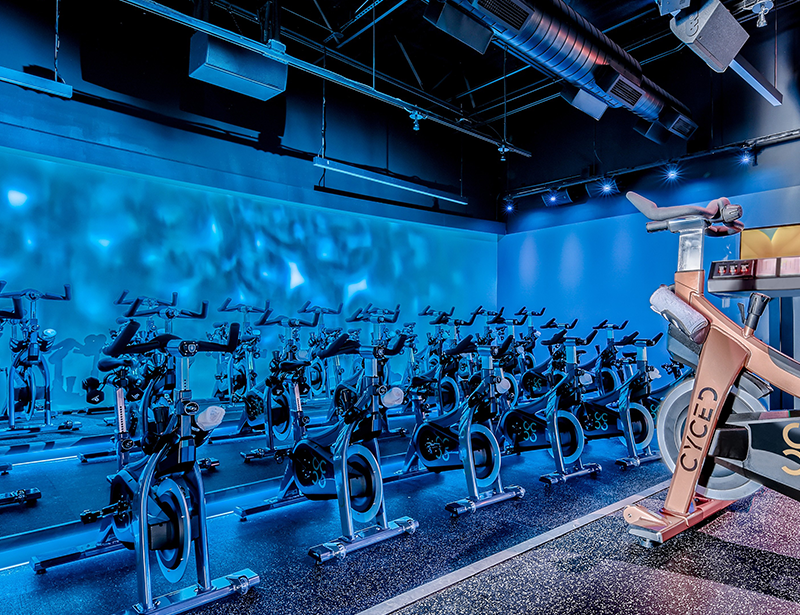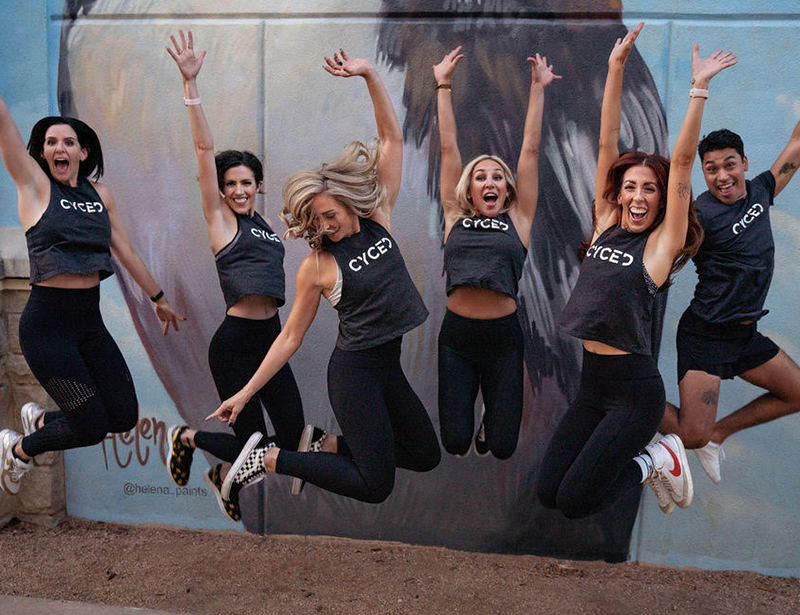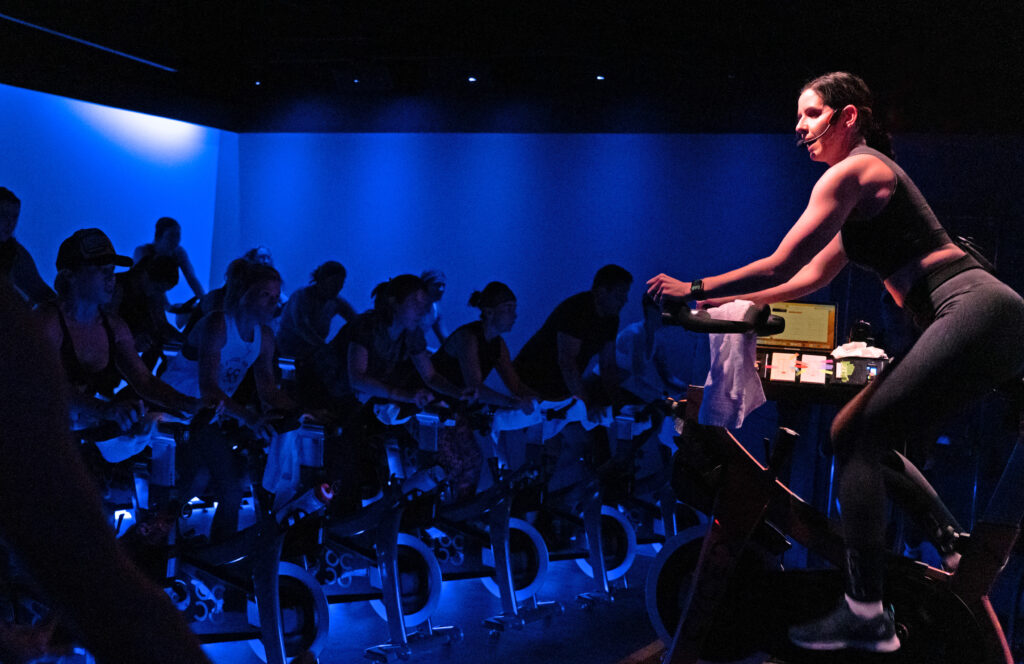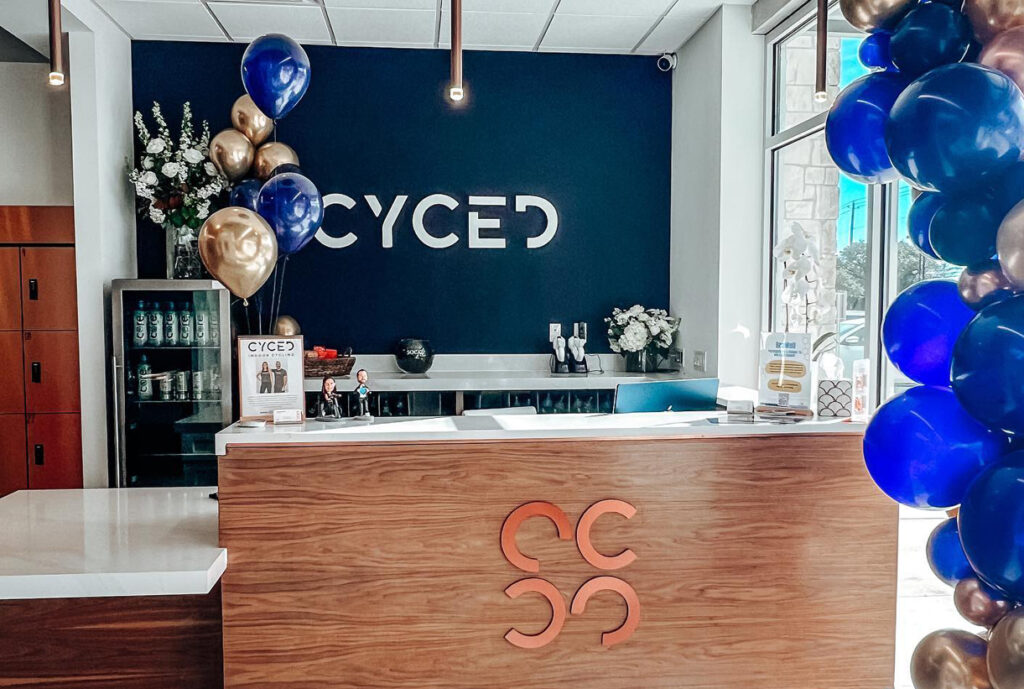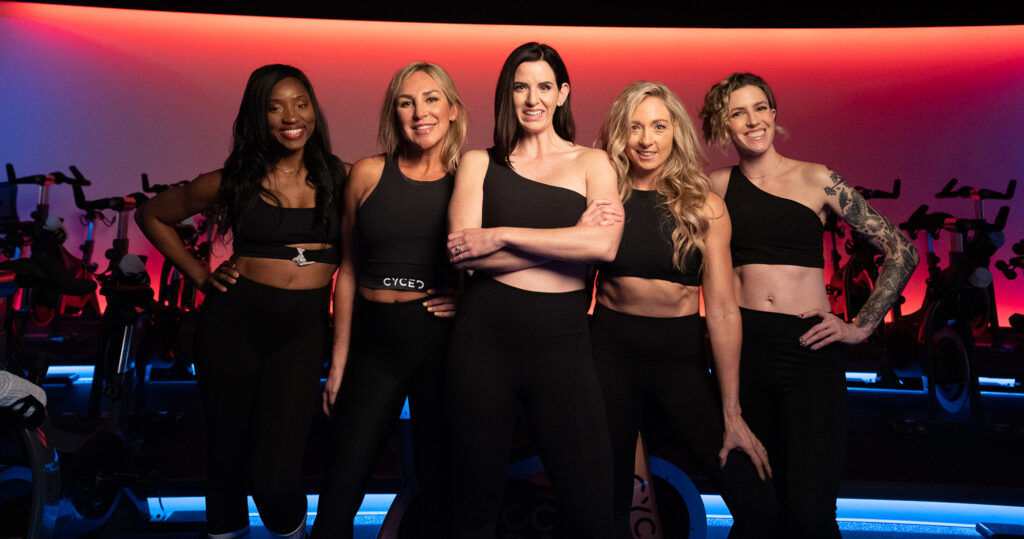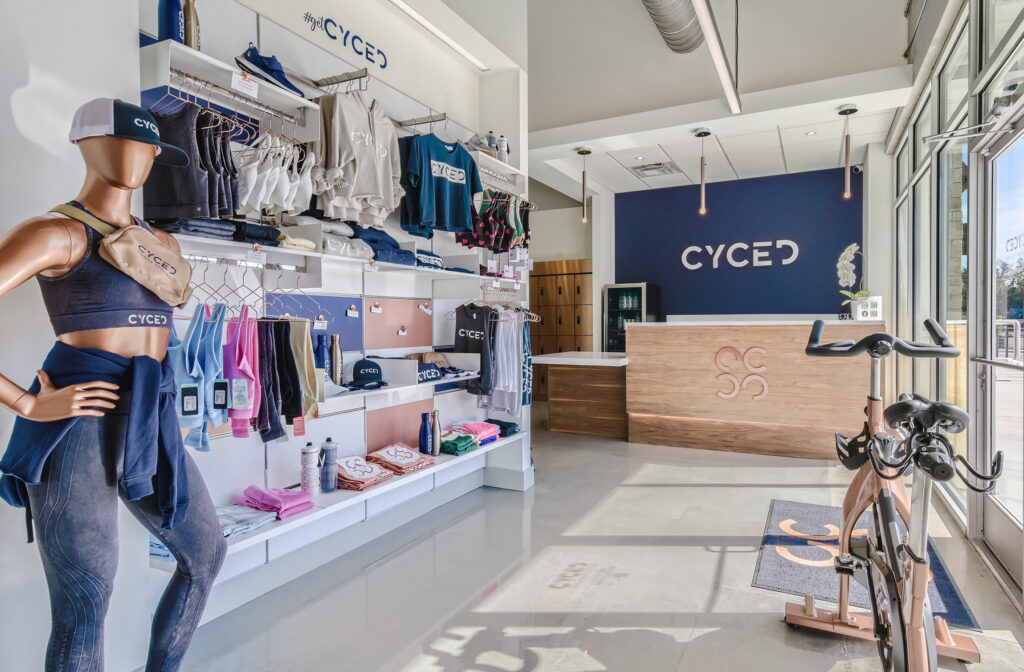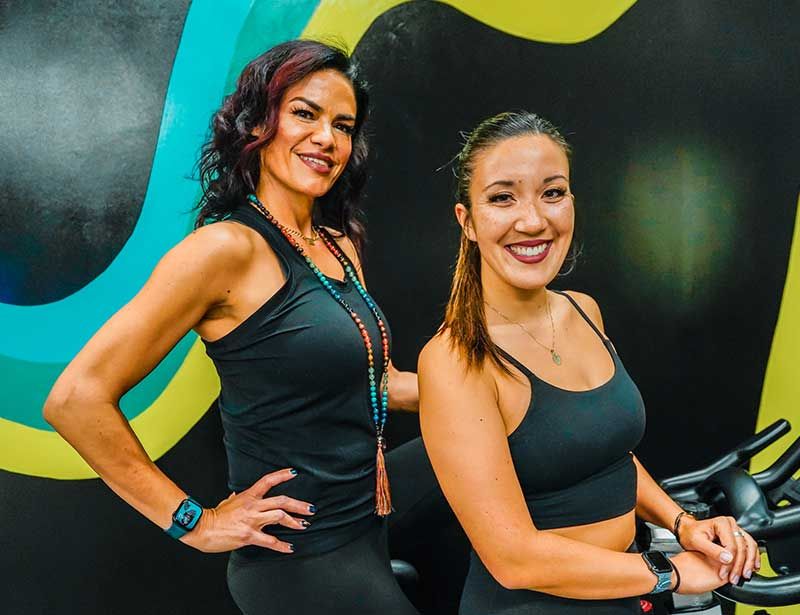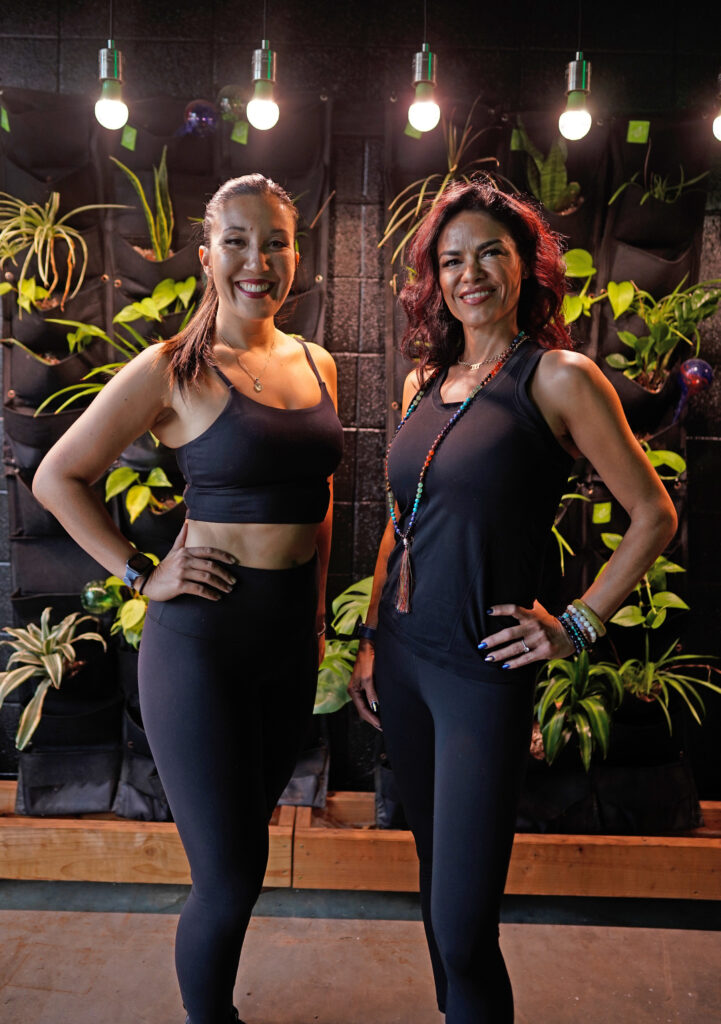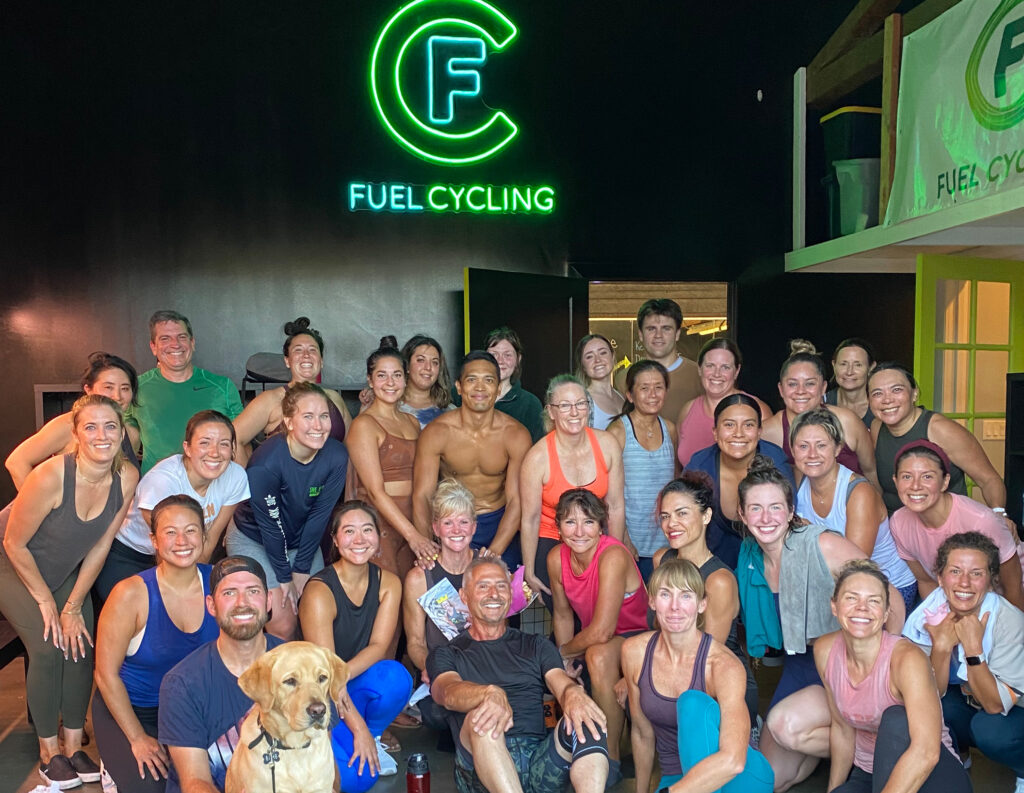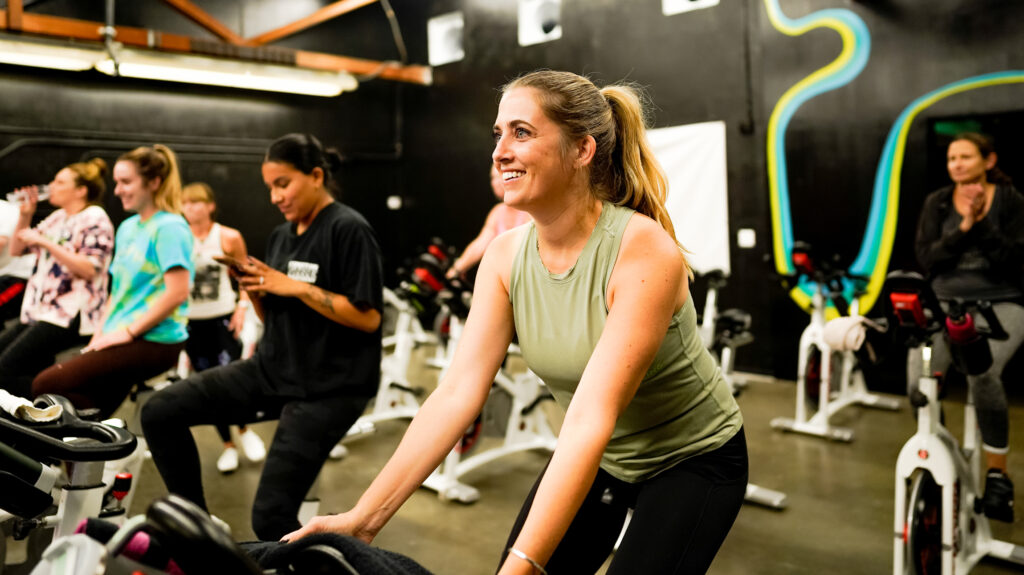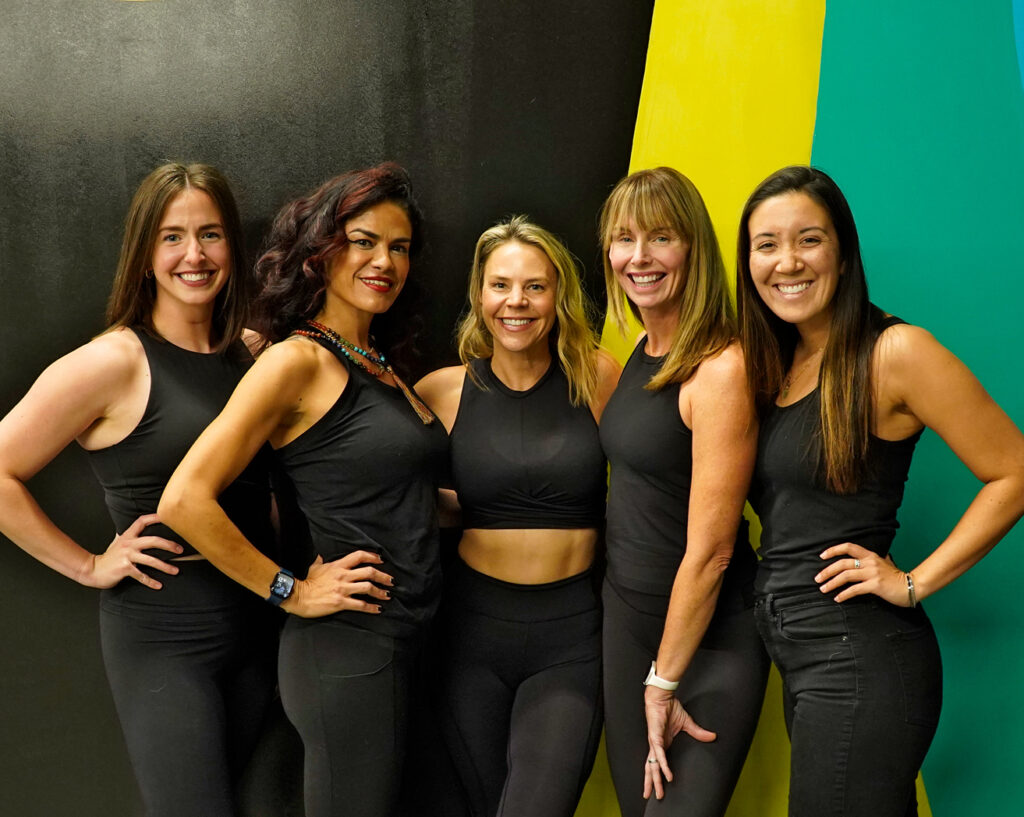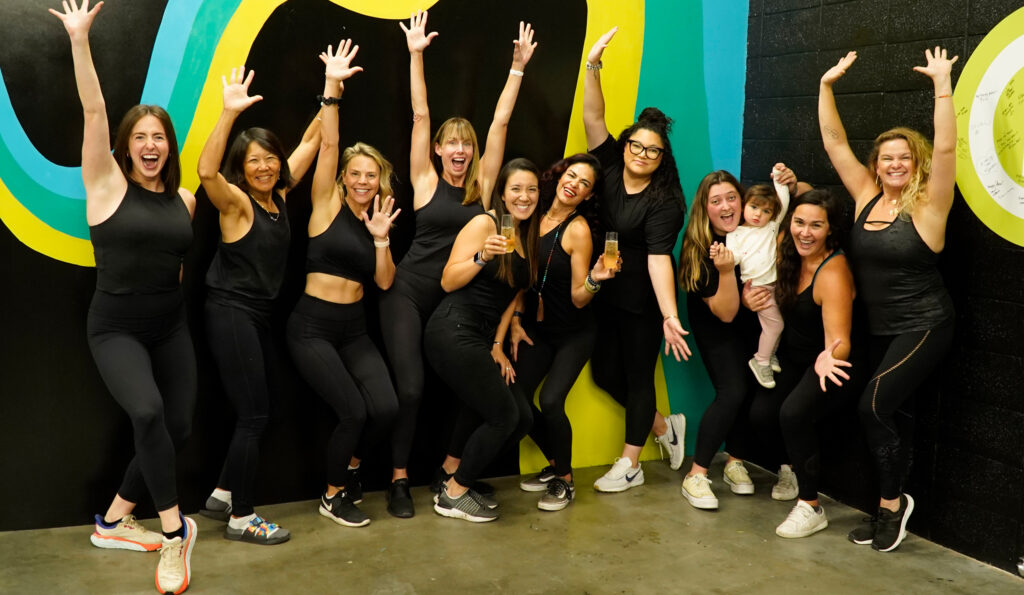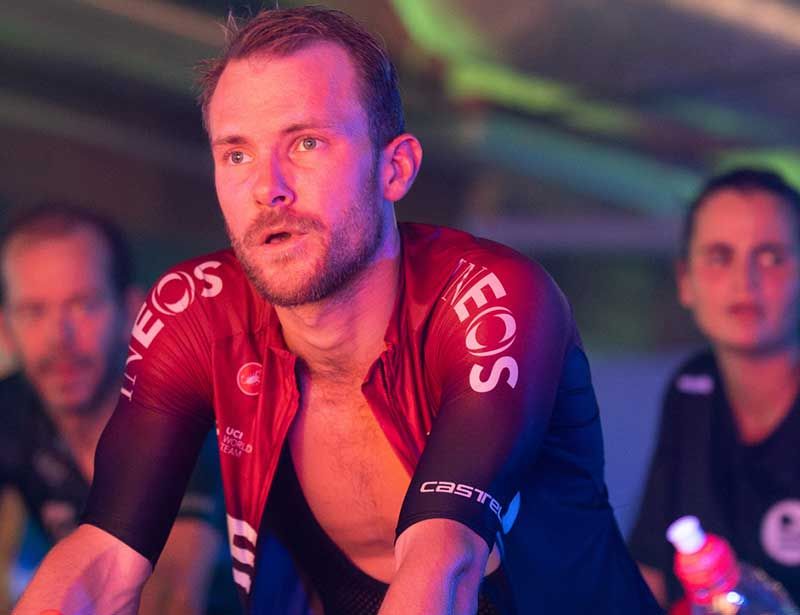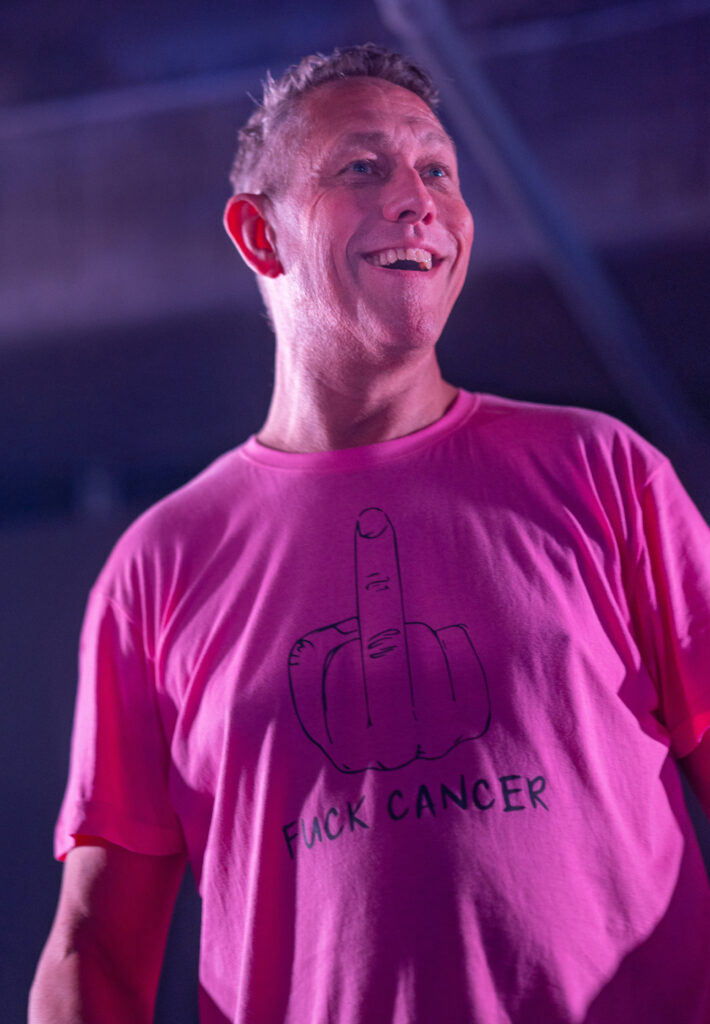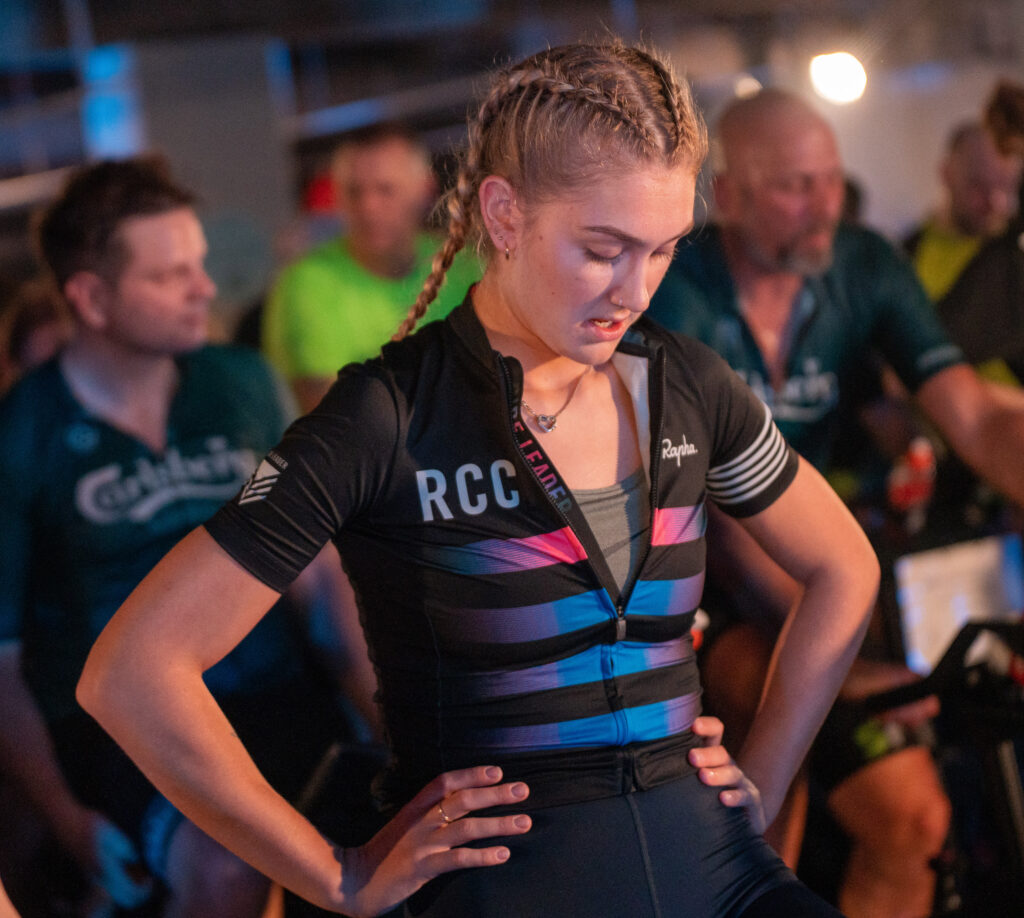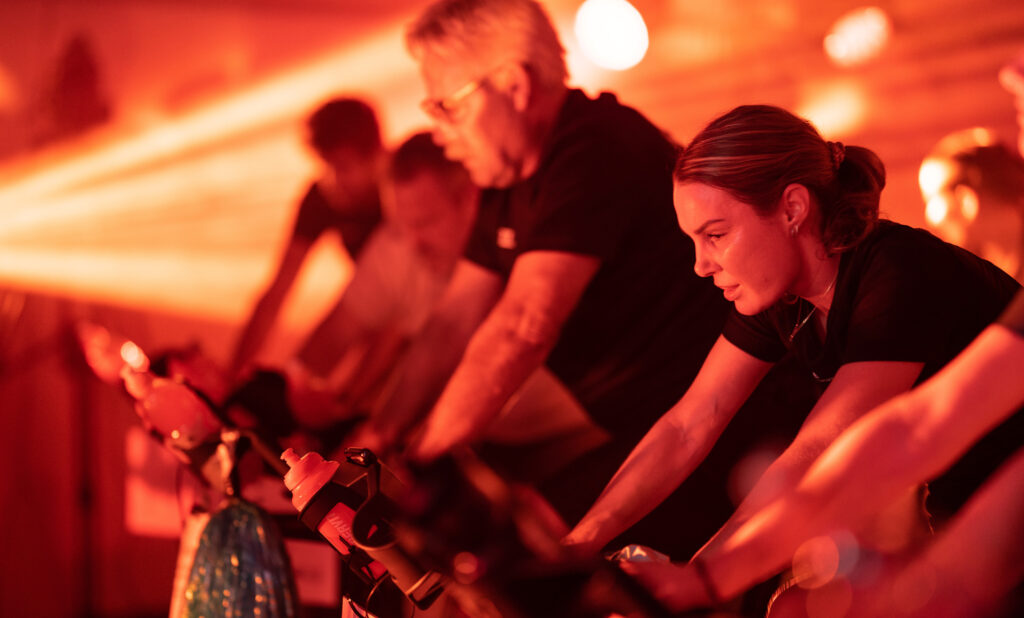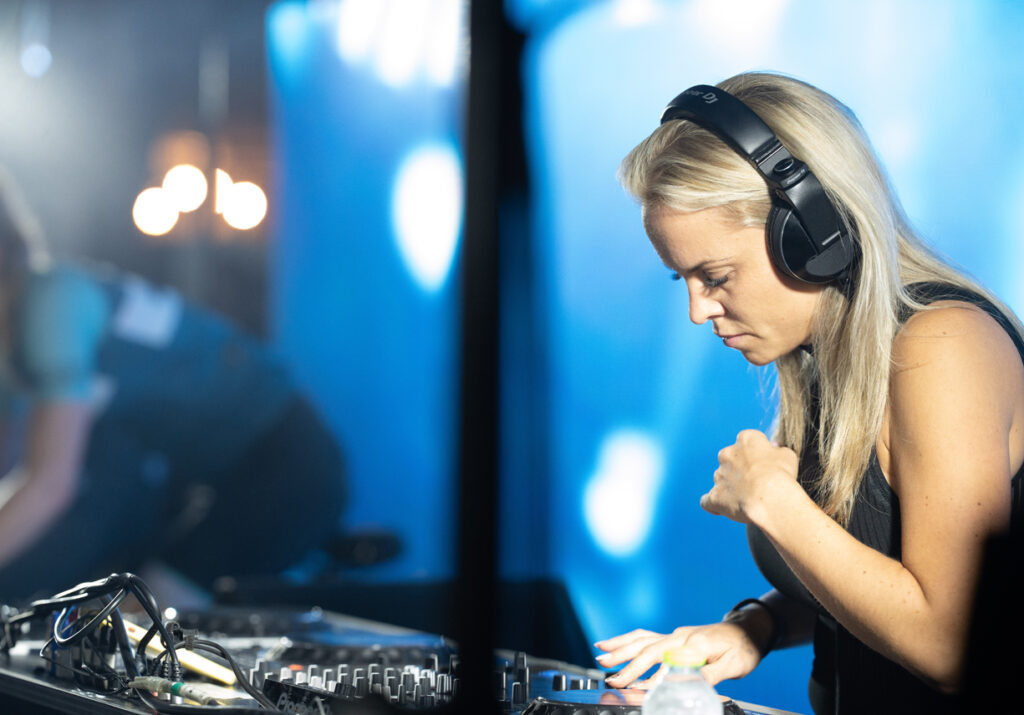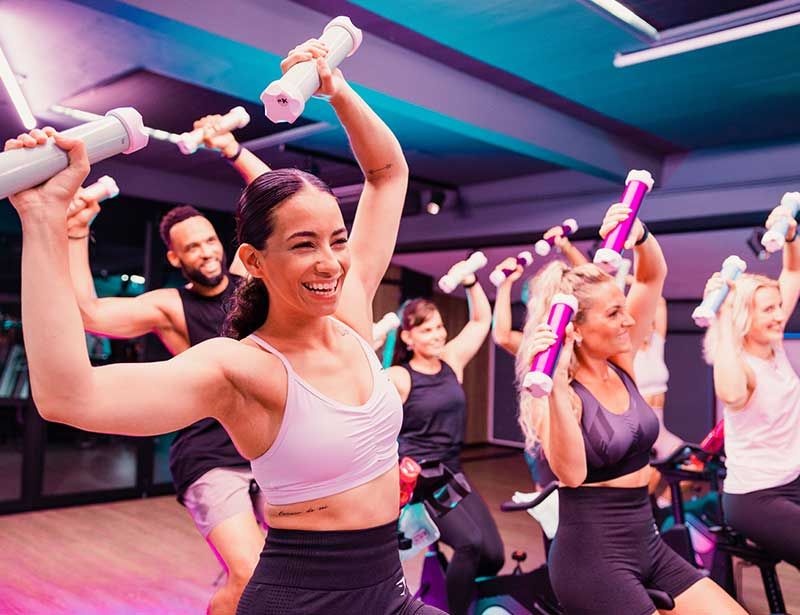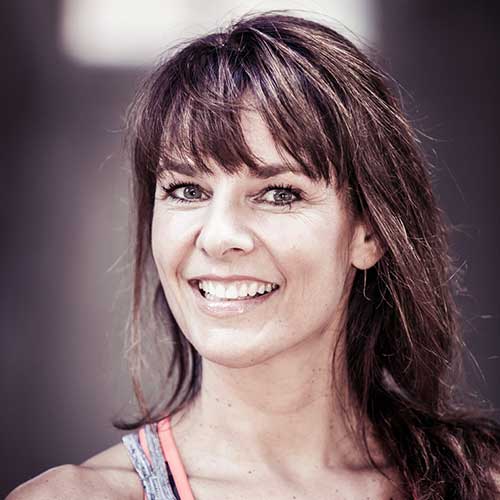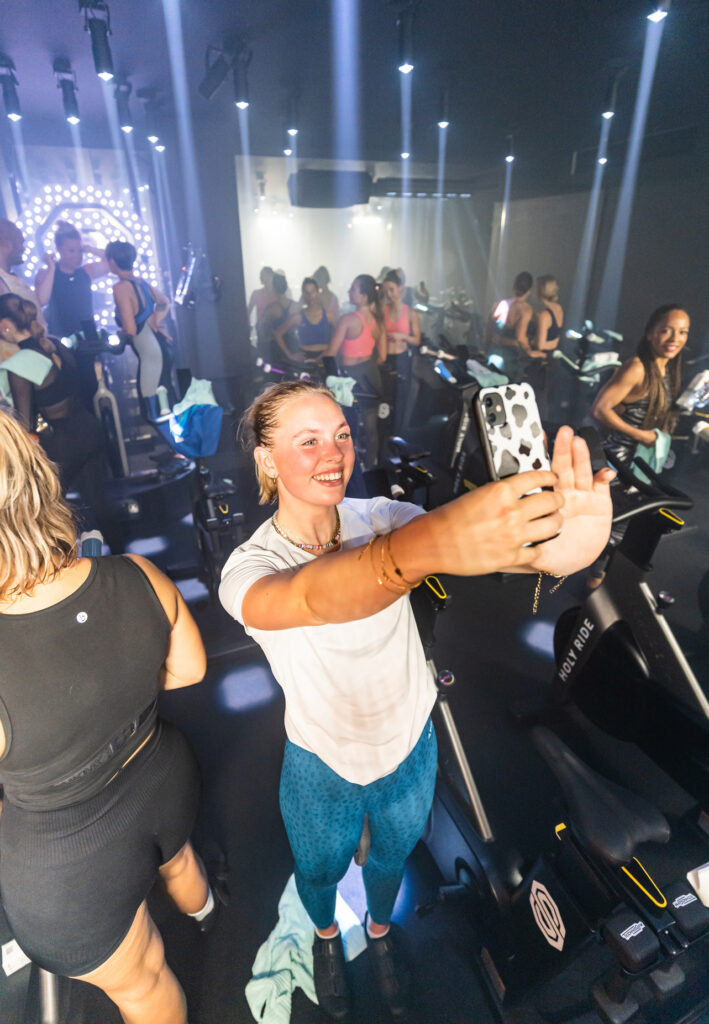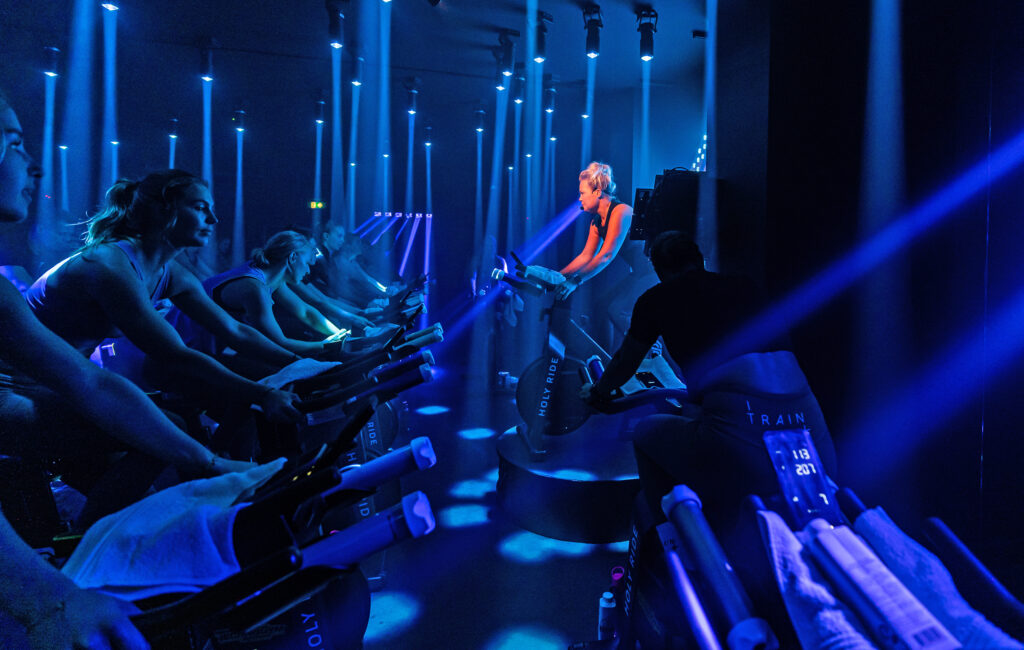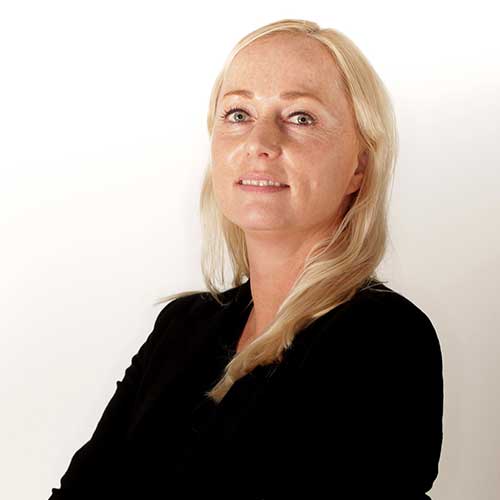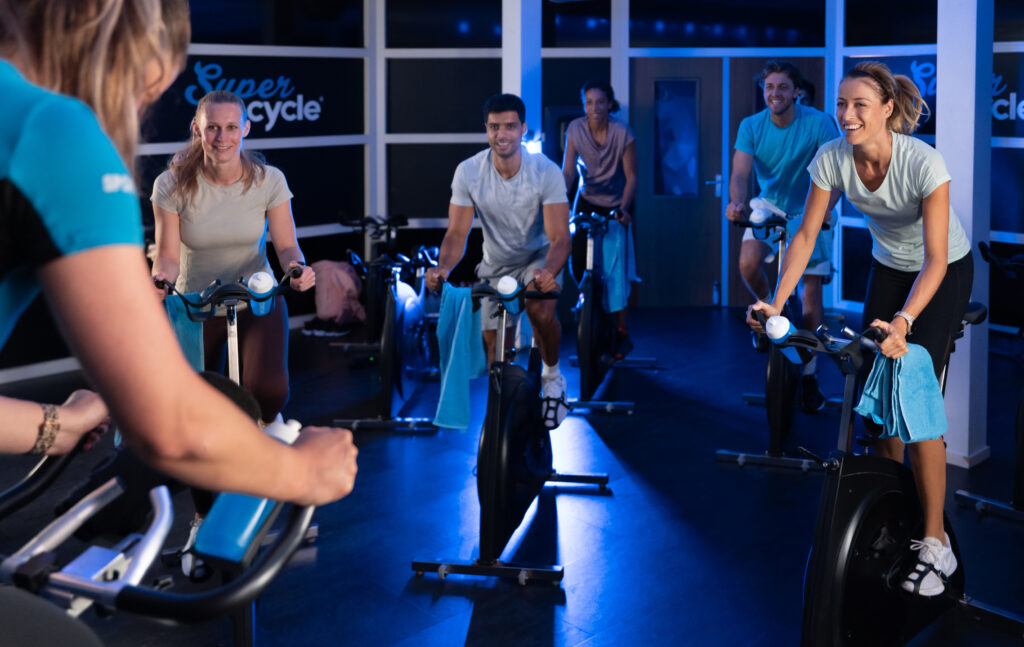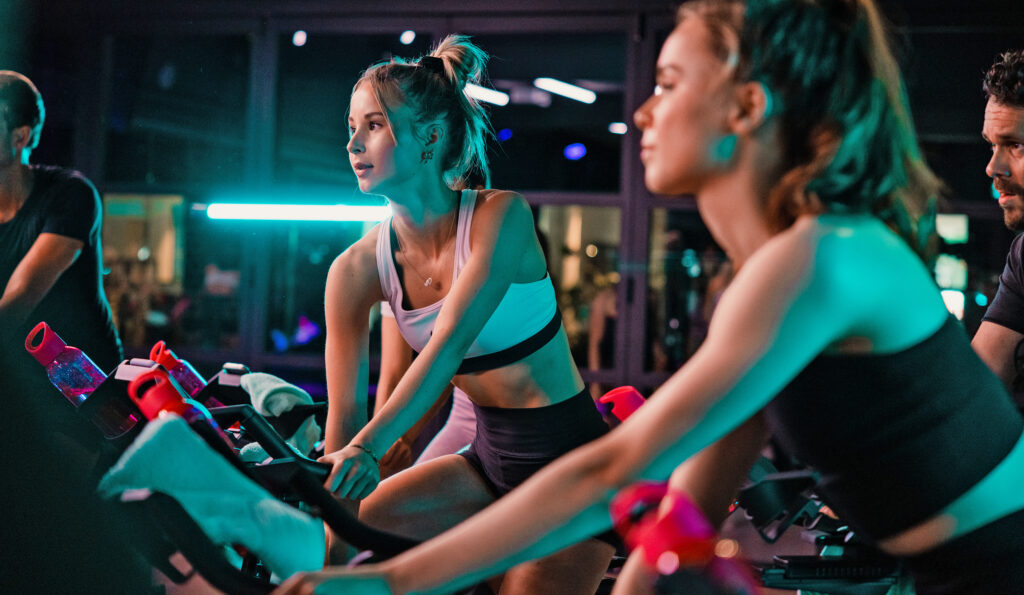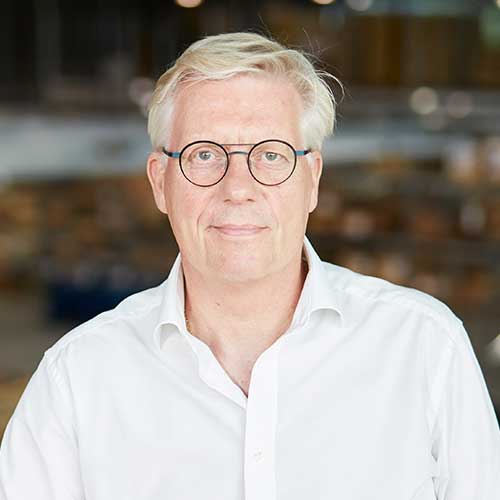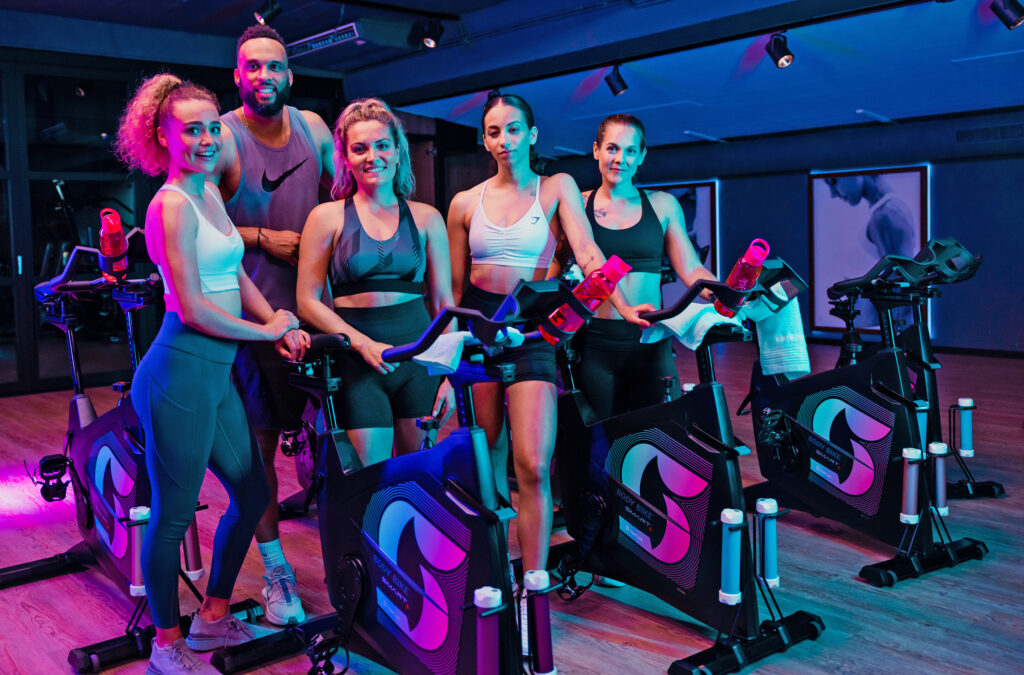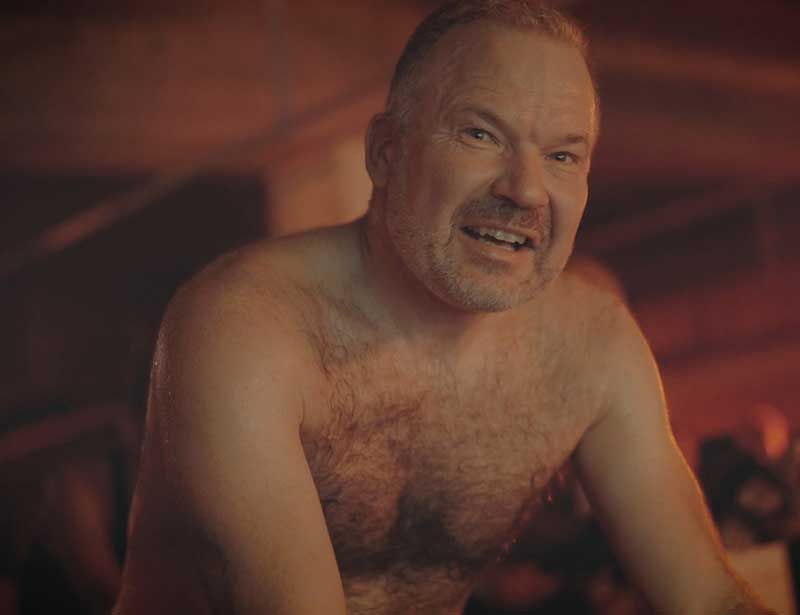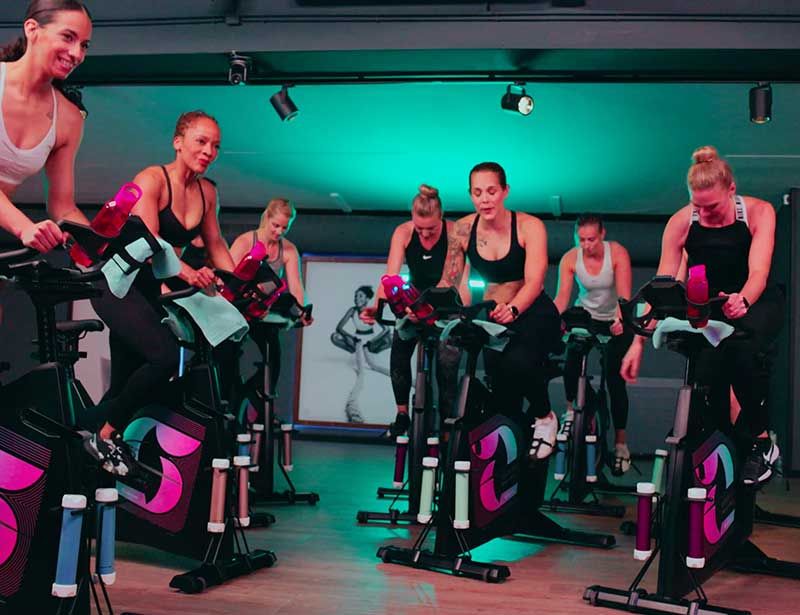Gundula Cöllen-Sorger
What’s the story behind BECYCLE?
I’m from Germany, but I’ve moved around quite a lot: school in England and university in London, time spent working for a consultancy firm in Sydney and so on. Each new city I moved to, I’d find a place to work out. I always saw that as my opportunity to meet people – much easier than trying to make connections in the workplace.
There weren’t really boutique fitness studios back then, but there was already a trend – especially in Sydney – towards a more personalised set-up, with small hot yoga studios, PT spaces and so on. Here, you were part of a community: a name, not a number. When I returned to Germany in my early 30s, I really missed having somewhere like that.
“The body needs to do complementary workouts to feel good: yoga, strength training and so on. You can’t just do cardio”
I was still working in consulting then, but in 2015 I went to the Burning Man festival and everything changed. I found my love for cycling and music.
Stopping in Los Angeles on the way out, I tried SoulCycle for the first time and was really excited by it. And then Burning Man… it’s such a huge area that you cycle everywhere. Everybody picks up an old bike and dresses it in ribbons and lights – it gets dark in the desert at night! – and you’re cycling around constantly listening to music, because there’s music everywhere, with different DJs all over the place. You’re never without music. And you’re always cycling.

Experiencing this, having already experienced SoulCycle in LA, I started to ask myself why this wasn’t a thing yet in Europe. Why were our cycling experiences all in brightly lit rooms, in big box clubs, with music as mere background noise?
In the space of a week, I realised this was what was missing in Europe, and that it was my calling to bring it back to Germany. The whole idea of founding BECYCLE pretty much happened at Burning Man.
How did you get it off the ground?
When I came up with the idea, I was introduced to another lady – Viola Huetten – who had been thinking along similar lines. Also German, she was living in New York, and together we set about trying to find investors who wanted to help us build this business in Germany. With no financial crisis or pandemic at the time, there was a lot of appetite to bring successful American businesses to Germany: it wasn’t hard to tell the story or get funding through Viola’s New York network.
“It wasn’t hard to get funding. The challenge was finding a suitable space in Berlin. People didn’t take us or our concept seriously.”
What was more challenging was finding a suitable space in Berlin for our first club. The owners of the buildings we looked at didn’t take us or our concept seriously. They saw two women in their mid-30s and the track record of fitness businesses – which the banks had never seen as a great bet – and they laughed at us.
Finally we found a building in Berlin Mitte, a really good neighbourhood right in the centre of Berlin. The owner still laughed a bit, but he wanted to see if we could make it happen. We had to do everything from scratch, funding the whole renovation and fit-out ourselves, but we knew location was everything and we were prepared to do it.
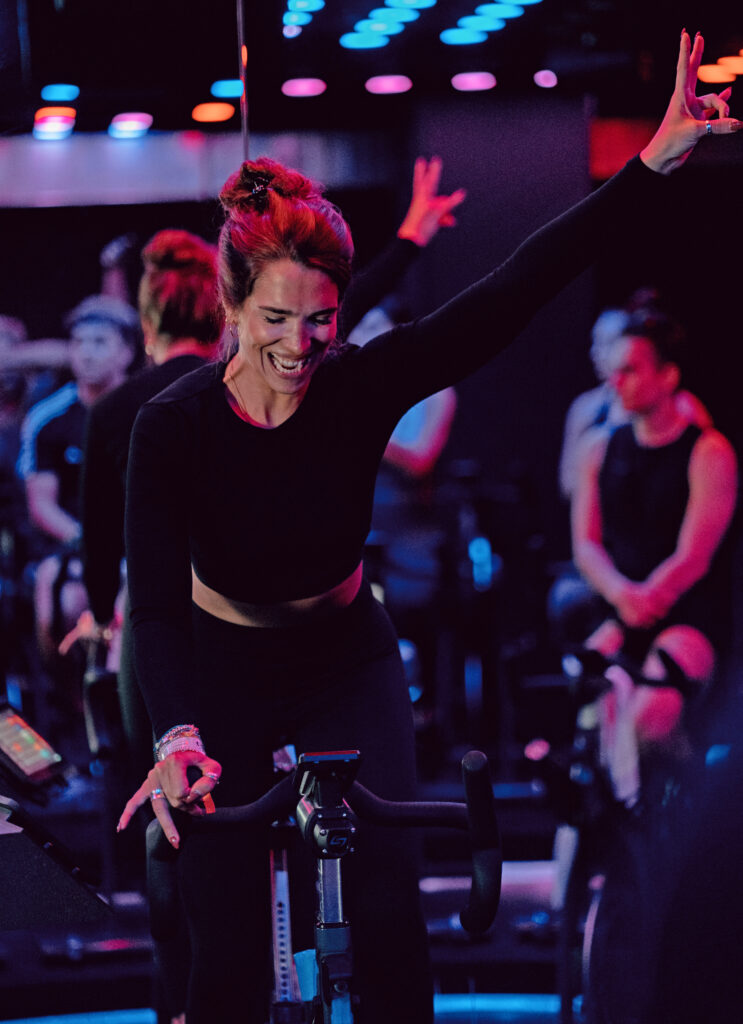
When did you open?
We finally opened our first BECYCLE in 2016: a 550sq m club with a much bigger concept than originally intended. We’d planned to create a cycling studio, but we ended up creating a place where people came together, with a café and huge community area, kids’ activities, a cycling studio and a second room for yoga, barre, HIIT and now also mat pilates.
My background obviously isn’t in fitness, but I just had a gut instinct that people wouldn’t want to cycle four or five times a week. The body needs to do complementary workouts to feel good: yoga, strength training and so on. You can’t just do cardio. So I pushed to get the broader concept through and we managed to persuade the investors, and in the end it’s what’s seen us through the pandemic. People’s mindset changed during that time and we now have a lot of customers who don’t even cycle at all, so it’s been really positive to have a more holistic offering.
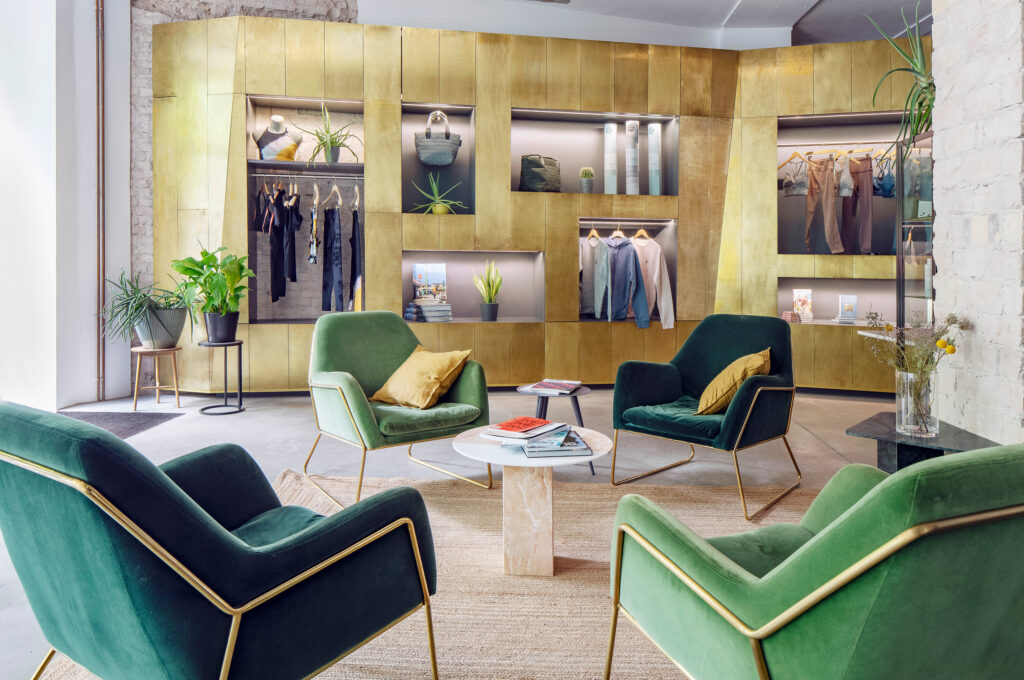
And we encourage people to do a bit of everything: I know my best week is one where I work out four times and can do all the different modalities. Not everybody does that, of course, but the different classes really do complement each other. For example, we introduced mat pilates to meet post-pandemic demand and now people tell us the breathwork they’ve learned is helping them perform better in our cycling classes too.
What’s your style of cycling?
There’s nobody else in Berlin doing our style of cycling, which is performance-based like they used to do at Flywheel; we actually had one of the Flywheel master trainers come over to help develop our programming. We use metrics from the bike, riding to RPMs and watts, and we use leaderboards. It’s very much about improving your performance, not just having fun and dancing on the bike.
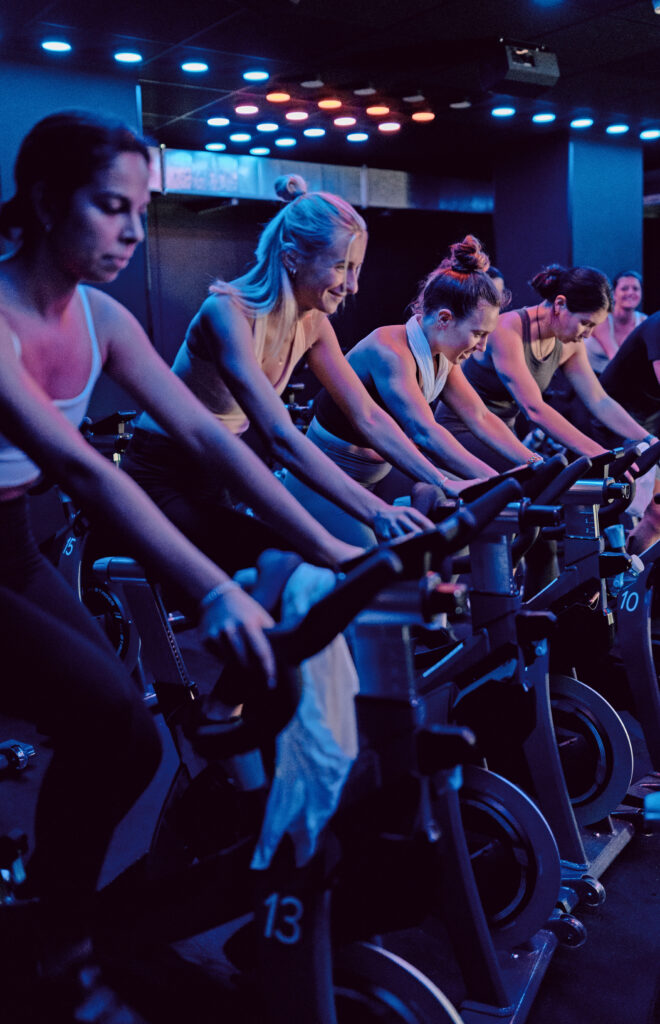
“Successfully expanding a business like this is hard. It’s a passion project and highly dependent on the people running it.”
It actually really intrigues me that most other studios in Berlin have gone down the party-on-a-bike route. I never would have thought Germans would be so open to workouts so rooted in pure fun rather than science, but they seem to be doing quite well.
And it’s great for us, because at the moment what we offer is unique. So while in most of our disciplines we simply ask our freelance instructors not to teach at other clubs in a 2–3km radius, we ask our cycling instructors not to teach our style elsewhere at all.
Our standard Ride class is 45 minutes, but we also have a 60-minute Ride+ class, while our 30-minute Ride Xpress is often combined with 15 minutes of strength for a full-body workout. We want the experience to feel personal and truly boutique, so our classes are quite small: for Ride, it’s 30 bikes; for yoga and barre it’s just 18 participants.
What are your clubs like?
We now have three clubs – two in Berlin and one in Düsseldorf – and they’re all third spaces where people come together, work and work out. They’re like mini Soho Houses, with lots of space to linger and connect.
We frontload our investment, working with the same architect across all our clubs to create distinct but equally beautiful spaces across our various locations: wonderful designs and special features, premium materials and so on. In fact, our club in Berlin Mitte won an architectural award.
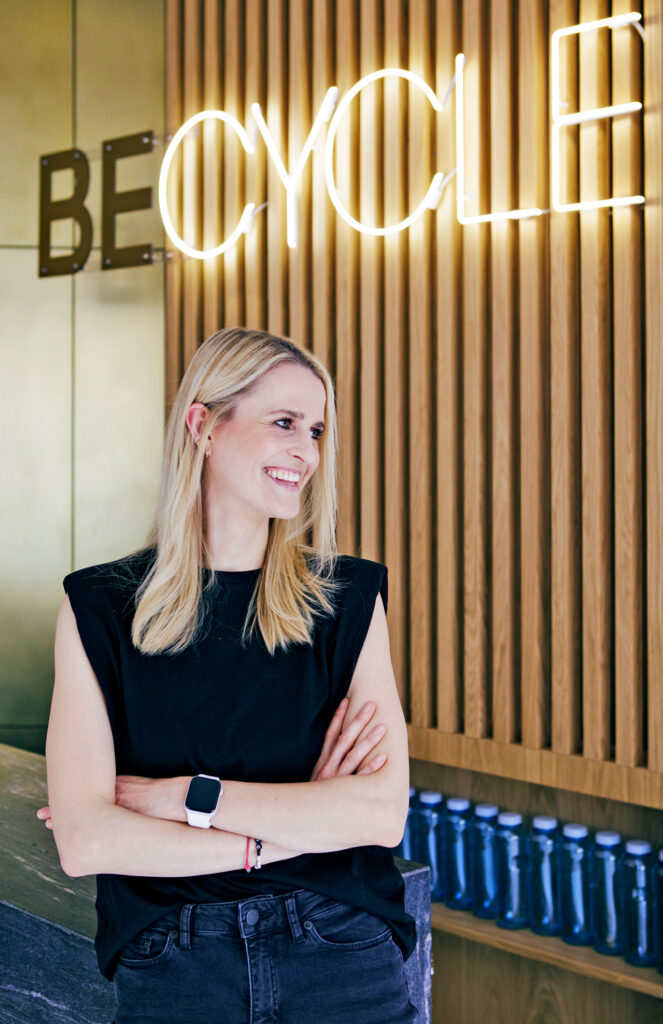
We also have a specialist lighting designer who’s known for the projects he’s done for a famous Berlin nightclub. We’ve worked with him on our Ride studios, creating ceilings where the lights pulse and chase overhead, spurring you on in your workouts with different colours and intensities and speeds.
The boutique market isn’t very developed in our markets yet, so for now our high design spec is a USP for us. We believe it’s worth the investment, because it means we don’t have to do much marketing. Our customers do it for us, taking photos of our clubs and sharing them on social media.
Club #2 opened mid-pandemic…
It took a while to become well-known in Berlin, reaching occupancy levels that meant our first club was working financially. Our breakthrough year was 2018, with 2019 the best year we’ve had. So that was the year I started thinking about expanding the business.
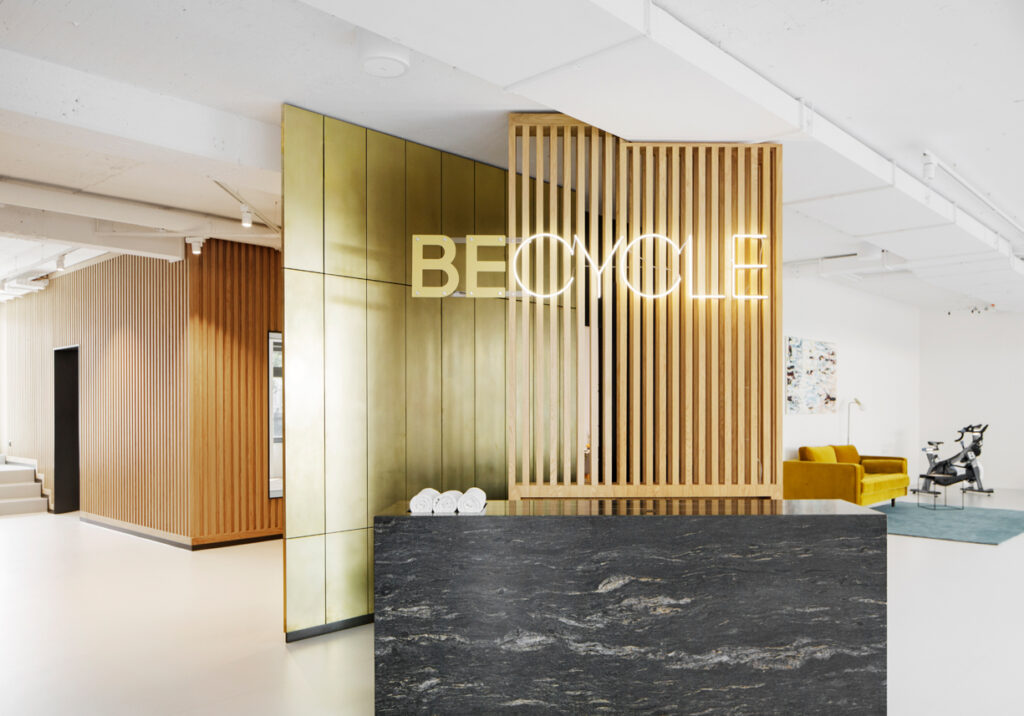
My sister-in-law, who lives in Düsseldorf, was a huge fan of our concept and asked me to dinner to propose that she set up a BECYCLE club there. I was delighted, because successfully expanding a business like this is hard. It’s a passion project and highly dependent on the people running it: it’s not something you can easily franchise. You need the personal connection of an owner who also runs the business and is there every day.
“I see more opportunities in Berlin: we’re in the east and haven’t yet tapped the many opportunities in the west.”
We found a space in Düsseldorf and created a beautiful club. It’s bigger than the first – we were doing well and wanted to expand – with four studios to offer Ride (cycling), Reformer (reformer pilates), Refine (barre, mat pilates, HIIT and yoga) and personal training.
And then along came the pandemic. In the end, the club opened in July 2020 – after the first, shorter phase of lockdown – so it had a really tough start. The government was great with all the support it provided during lockdown, but as soon as things opened up again, that support stopped. Yet people were still hesitant to come to class. So that was actually the toughest time: 2021, when we’d fully re-opened, and into 2022.
In fact, I can only safely say that we bounced back in January this year – 2023. And even now it’s not easy. We’re definitely still not where we were before COVID.
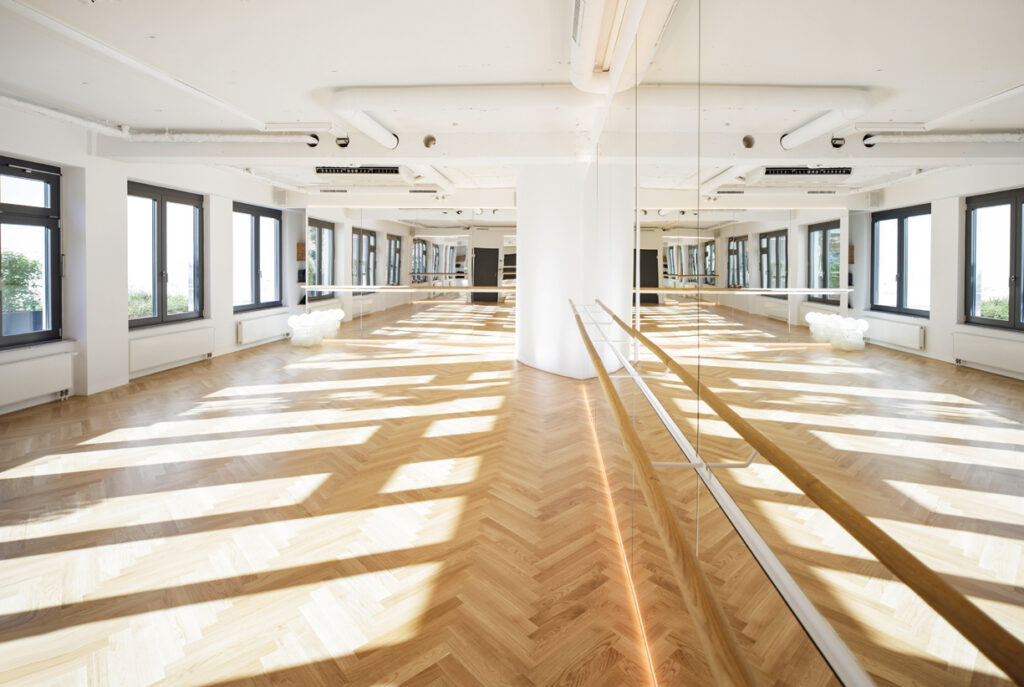
Tell us about club #3.
Club number three is back in Berlin, in an area of the city called Kreuzberg, but this time it operates under the BEYOND brand as there’s no cycling at this club at all – just reformer pilates, barre, HIIT and yoga.
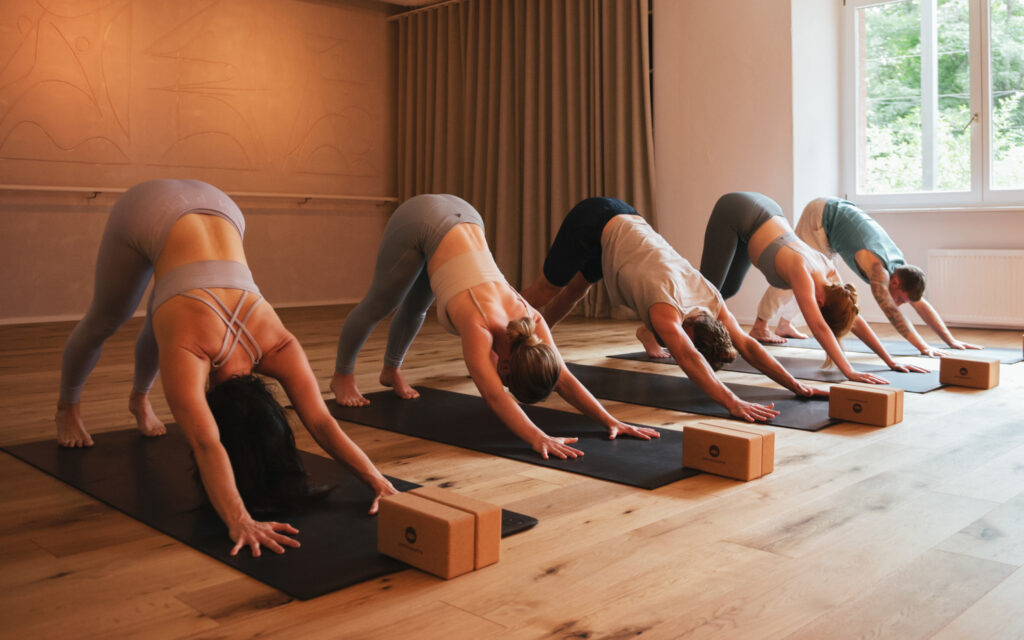
I’ve become very interested in the reformer pilates trend and how it’s moving in a group fitness direction, set to music and at times featuring some more cardio-focused movements, but still staying true to pilates. And it’s going really well for us, to the point that we’ll probably make reformer pilates our primary focus now, at least in cities where we already have a club that offers cycling; new cities will still have cycling in the mix.
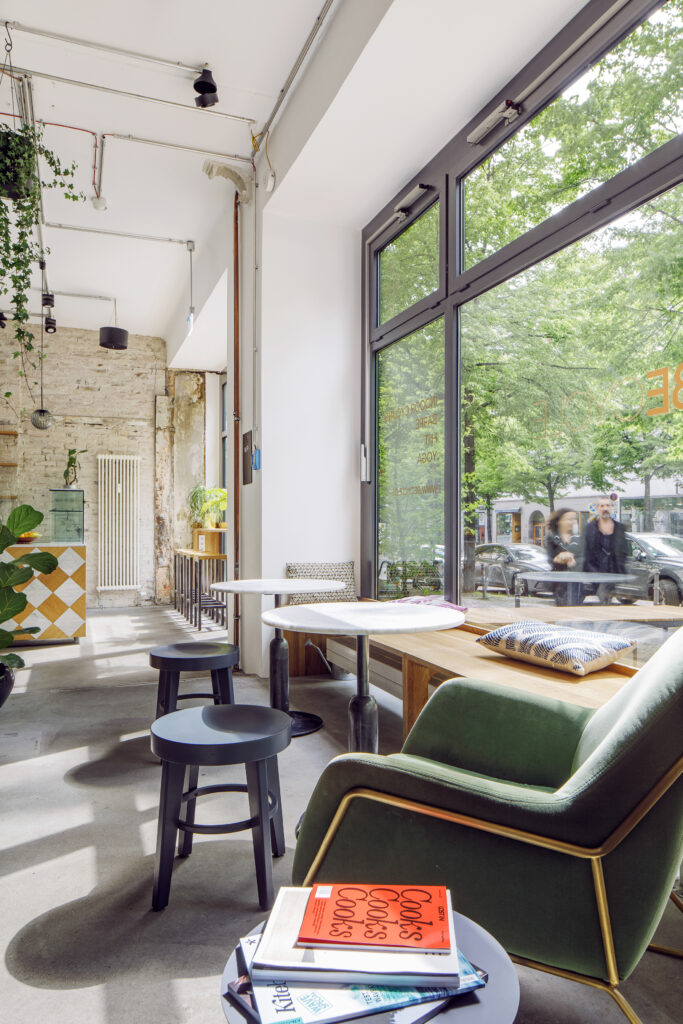
Because creating cycling studios is very expensive: you need to build soundproofed rooms, ideally with theatre-style tiers, and install lots of specialist lighting. There are no such specifications for reformers: you can build multi-purpose rooms and put whatever you want in there.
I also really like the fact that reformer pilates appeals as you age. The way we do cycling, with loud music in a dark box… when you get to 50 or 60 or 70, that isn’t necessarily what you want. Given our members in Berlin are typically aged between 30 and 50 already, and only slightly younger in Düsseldorf, we do have to think about that.
The next challenge will be to find older instructors: at the moment, they’re pretty much all in their 20s and 30s. I find that a shame: I’m inspired by older people who are fit and looking after their health, but older instructors are very hard to find. I don’t actually think there are any in Berlin!
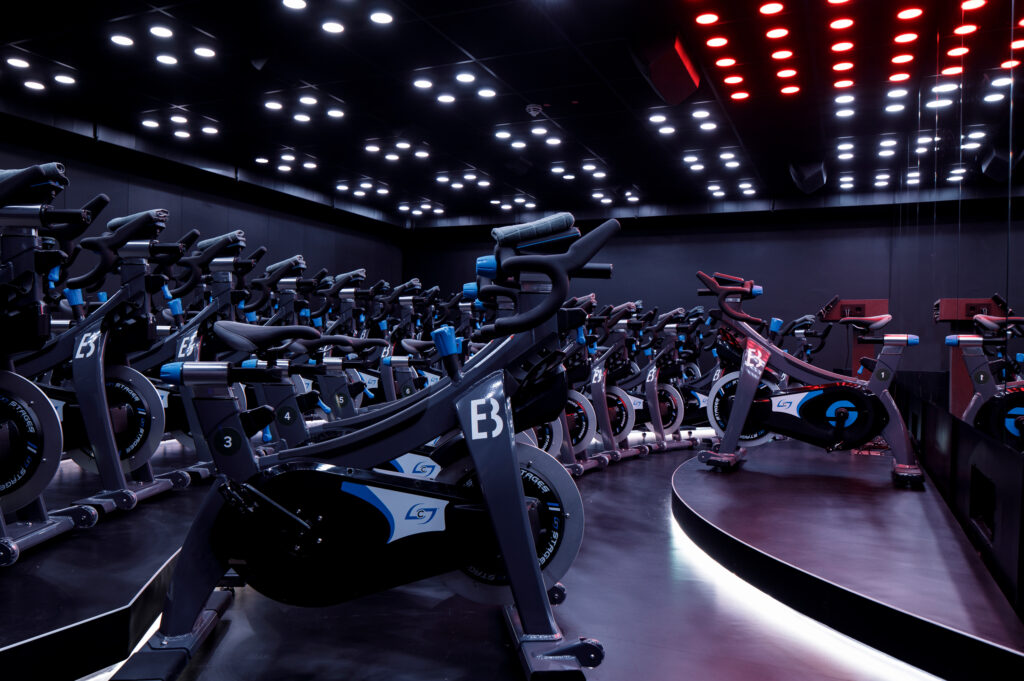
What are your growth plans?
We’ll grow further in Berlin, where we should have taken a cluster approach from the outset. With the market not yet saturated, people are still willing to travel for the experiences they want, and by creating different offerings across our two clubs, they’ve cannibalised each other a bit.
But I do see more opportunities in Berlin, which remains quite a divided city in many ways: we’re in the east and haven’t yet tapped the many opportunities in the west. In fact, there’s another location we’re in discussions on at the moment, which if it goes ahead I hope to open in September.
And I definitely think there’s space for a couple more clubs in Berlin, but this time we’ll cluster. For example, we already have our club in Berlin Mitte, but there’s no reformer pilates there at the moment, so that’s an opportunity.
“The secret is continuing to have fun. We all need to do something we really enjoy, because life is very short.”
I’m also not fixed on any specific modalities: I’m always open to exploring what else is out there, adapting to new trends and interests, and I think we’ll always have at least two rooms to offer a variety of experiences.
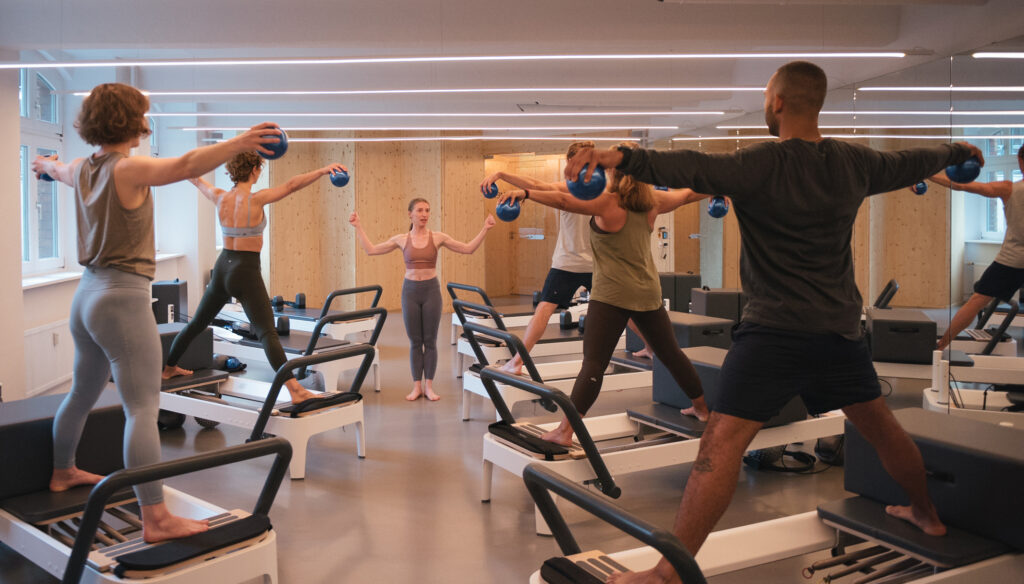
Meanwhile, we’re doing well in Düsseldorf. The club is growing every month and it’s a good, affluent city to be in. I’m pleased to be there. But it’s also a smaller city than Berlin, so we’ll stick with one big club and potentially look at other smaller studios in the future.
At some point we might also consider southern Germany, and because my husband and I love Lisbon, potentially Portugal if we can find the right partner: someone who’s willing to invest themselves and have skin in the game.
So there’s a lot we could do. But with life so uncertain at the moment – not only with the situation in Ukraine, but with rising costs too – we have to be a bit careful. Our costs are up 20 per cent, but we haven’t passed that stress on to our members.
What’s the secret of your success?
The secret, I believe, is continuing to have fun. My husband works in start-ups and it’s all about profits and planning exits, but that’s not what I want my life to be.
I think we all need to do something we really enjoy, because life is very short. This is my passion business. I do it because I personally love to take classes every day. I love coming into the studio. I enjoy connecting with customers when I take my turn on the front desk.
And that’s so important. If you lose the connection with your customers, you won’t know what’s going on and you won’t be able to keep improving your services.
My view: if you’re in this business and you don’t feel a passion, it’s probably time for you to be doing something else.

